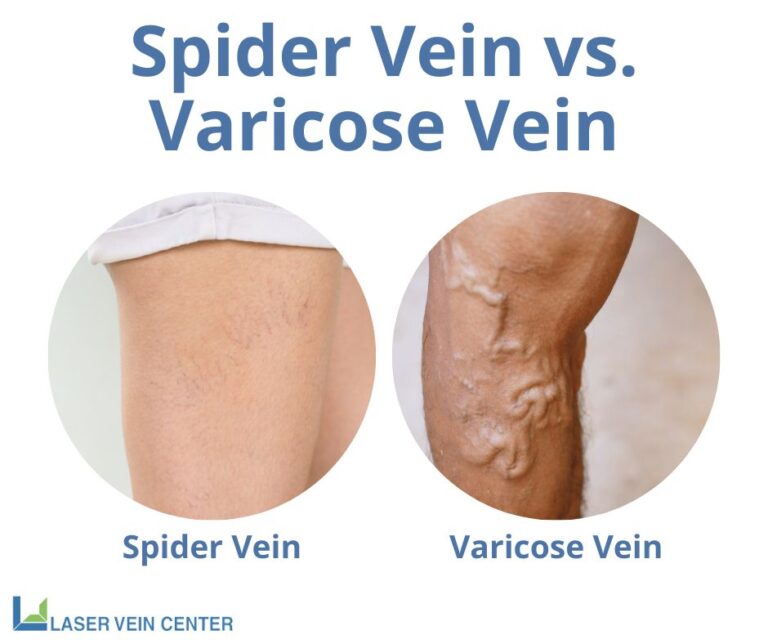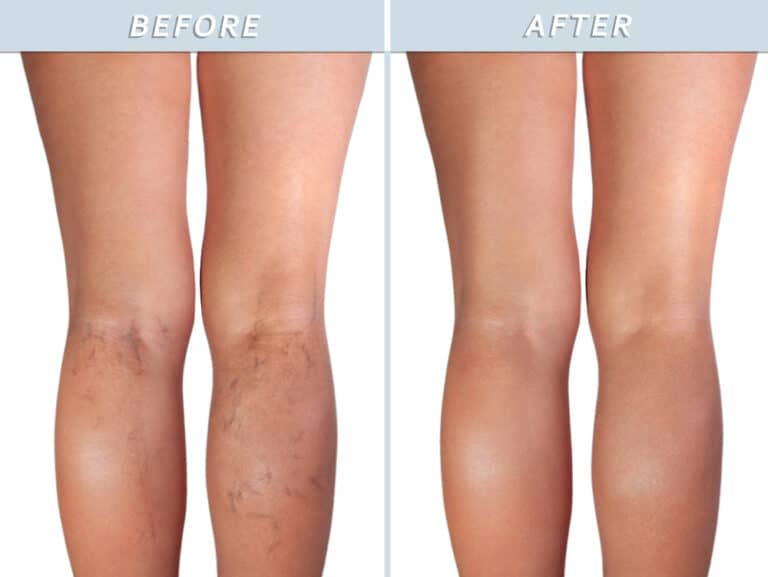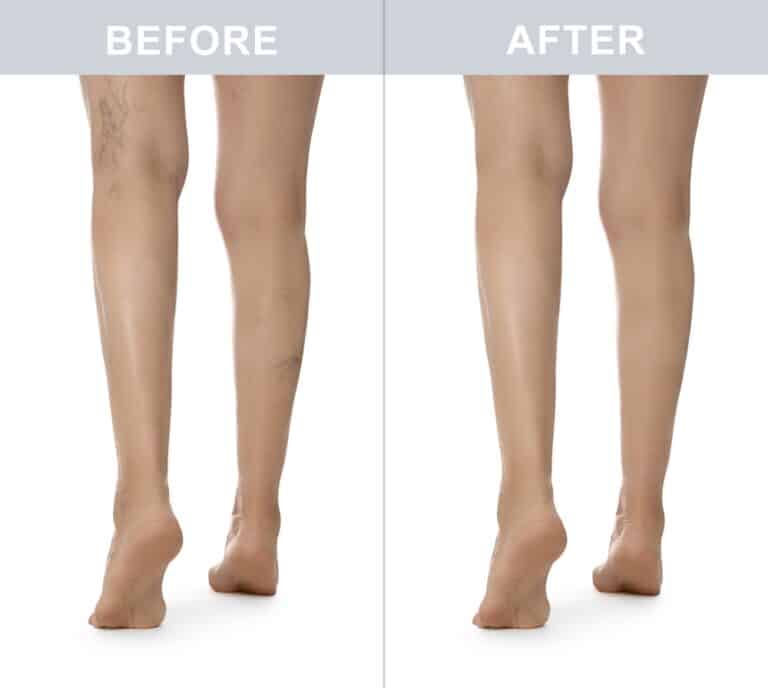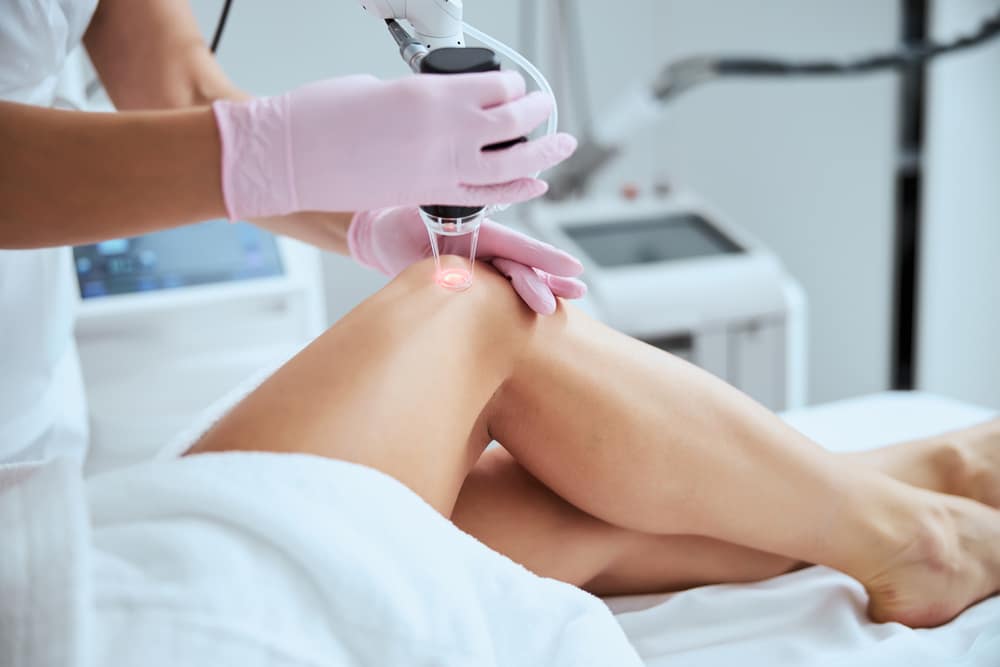Spider veins are a common aesthetic concern, especially among women as they age. These thin, red, web-like lines that appear just below the skin’s surface can be a source of embarrassment and discomfort. Understanding the causes, implementing preventive measures, and exploring treatment options can help stop spider veins in their tracks and restore confidence. This comprehensive guide will delve into the various aspects of spider veins, including their causes, prevention techniques, and available treatment options.
What are Spider Veins?
Spider veins are thin, spiculated red to blue to violet discolorations that appear just below the skin’s surface. They can be found anywhere on the body but commonly manifest on the face and legs. These feathery markings are often a source of embarrassment due to their appearance.

Spider Veins vs. Varicose Veins
Spider veins are extremely thin veins right at the skin’s surface, and they get their namesake from the spider appearance they make, circular in shape with long, thin legs running outward from the center. They are usually blue or red in color and rarely cause discomfort to those who have them. They can be treated cosmetically.
Varicose veins, also referred to as chronic venous insufficiency, are larger than spider veins and are more likely to cause serious pain, discomfort, and medical issues for those who have them. They bulge out from the skin’s surface and appear swollen, lumpy, or tangled. This chronic venous insufficiency may be accompanied by a range of painful side effects, such as aching, burning, rashes, restlessness, muscle cramping, and fatigue. They require prompt treatment; otherwise, they may lead to ulcers, blood clots, or other dangerous conditions.
Causes of Spider Veins
Spider veins share similarities with varicose veins but occur in smaller, more superficial ones. Venous insufficiency and valve dysfunction play a significant role in their development. When the valves in the veins fail to function properly, blood can accumulate, leading to increased pressure and the formation of spider veins. Several risk factors contribute to the development of spider veins, including heredity, obesity, prolonged periods of sitting or standing, aging, and hormonal changes in women.
Symptoms and Impact of Spider Veins
Spider veins are primarily a cosmetic concern, causing emotional distress for those unhappy with their appearance. In most cases, spider veins do not cause pain or discomfort. However, multiple spider veins may lead to swelling, tiredness, and cramping in the legs. It is essential to differentiate between spider and varicose veins, as the latter can cause more discomfort and complications.
Prevention of Spider Veins
Implementing certain practices in your daily life can help prevent the worsening of existing spider veins and the appearance of new ones. Regular physical activity, such as low-impact exercises like walking, swimming, or biking, promotes proper blood circulation and muscle contraction, reducing the risk of spider veins. Wearing compression socks improves blood flow and reduces fluid buildup in the legs. Leg elevation and maintaining a healthy weight also contribute to preventing spider veins. Protecting your skin from excessive sun exposure and limiting the use of hot tubs and saunas can minimize the risk of broken blood vessels.

Treating Cosmetic Spider Veins
When it comes to vein disease, spider veins are typically harmless but can be seen all across the impacted body area. Spider veins are found close to the skin’s surface, making them easier to find than varicose veins. These cosmetic symptoms make it easy to treat spider veins using Sclerotherapy.
In order to track down minuscule spider veins, Sclerotherapy treatment uses a vein light to help illuminate their presence. This spotlight effect ensures your treatment is as accurate as possible. A sclerosant is then injected into the impacted veins, causing them to close and disappear over time. Although they aren’t a health threat, spider veins can be an indication of further trouble to come, so it is best to treat them early and pinpoint their cause.
While prevention is crucial, various treatment options are available for those already affected by spider veins. While sclerotherapy is a highly effective solution, laser ablation is another precise treatment option that uses laser energy to target and eliminate spider veins. Mild and non-invasive approaches, such as lifestyle changes and compression stockings, can also help reduce the appearance of spider veins.
These are the most common types of spider vein treatment:
-
- Sclerotherapy: This treatment involves injecting a solution into the affected veins, causing them to collapse and fade over time.
- Cutaneous Laser and Intense Pulsed Light IPL This treatment uses light energy at specific wave lengths to coagulate the most superficial veins.
Your doctor or vein specialist can recommend the best treatment for your specific needs and goals.
Multiple Treatments for the Best Results
Similar to other cosmetic procedures, sclerotherapy requires multiple treatment rounds for you to see the best results and will be determined by how long it may take to have some veins permanently close. Every treatment of sclerotherapy has a limitation on the size of vein closure it can perform, and on average, it takes around two or three treatment cycles to see a long-lasting closure. Parts of a treated vein may reopen between treatments and need to be treated again.
Determining the length of treatment cycles all depends on how your body responds to the initial round of treatments. However, when you choose the professionals at the Laser Vein Center, you are choosing some of the most trusted physicians in the field. We will make sure each treatment cycle for your plan is handled with the utmost care so you can avoid any unnecessary side effects.
Who is a Good Candidate for Vein Treatment?
While most people with vein problems are good candidates for treatment, there are some factors that may make certain individuals better candidates than others. These factors include:
- The severity of your vein problems: If your vein problems are severe, you may be a better candidate for treatment than if they are mild or moderate.
- Your overall health: If you have underlying medical conditions that may complicate vein treatment, such as diabetes or heart disease, you may not be a good candidate for treatment.
- Your lifestyle habits: If you smoke or have a sedentary lifestyle, you may not be a good candidate for treatment. These factors can increase your risk of complications and may affect the success of your treatment.
- Your expectations: If you have realistic expectations for the outcome of your treatment and are committed to following your doctor’s post-treatment instructions, you may be a good candidate for vein treatment.
It’s important to discuss your individual circumstances with your doctor or vein specialist to determine if you’re a good candidate for treatment.

Recovery and Results Following Treatment
Recovery following spider vein treatment is typically minimal. Sclerotherapy and laser ablation are performed in-office, with minimal discomfort. Walking daily and wearing compression stockings aid in healing and improve blood flow. Results may take several weeks to become noticeable, and multiple treatment sessions may be necessary for optimal outcomes. Following post-treatment instructions, such as exercise and wearing compression stockings, is crucial for a successful recovery.
Taking Action on Vein Health
Empowered with knowledge about spider veins, their causes, prevention strategies, and available treatment options, individuals can take proactive steps toward addressing and managing this common aesthetic concern. By implementing preventive measures and seeking professional guidance, those affected by spider veins can regain confidence and achieve optimal vascular health.
Now armed with a comprehensive understanding of spider veins, their causes, prevention techniques, and available treatment options, you can make informed decisions about your vascular health. Remember, prevention is key, but if you already have spider veins, effective treatment options are available. Consult with a qualified specialist, like Dr. Wright at St. Louis Laser Veins,, to discuss personalized recommendations and embark on a journey towards healthier veins and enhanced well-being.

